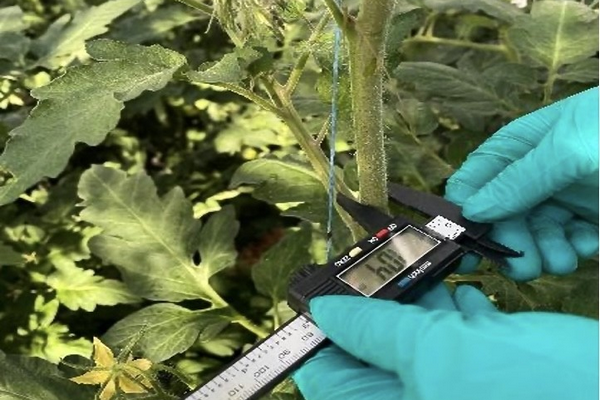As efficiency demands rise in the tomato greenhouse industry, traditional manual measurement methods struggle to keep pace. Stem width, a critical yet often overlooked metric, has emerged as a valuable indicator of plant health. Automated solutions that leverage machine learning and AI are now offering growers the tools to transform stem width measurements into actionable insights, ultimately driving improved crop health and more efficient resource management.
Stem Width as a Leading Indicator:
Stem width is an important metric that reflects plant health and responses to environmental factors like light, temperature, and irrigation. Monitoring this metric helps growers detect early signs of imbalance, allowing for timely intervention to maintain optimal crop conditions.

Challenges with Manual Measurement:
Traditional methods, like using calipers or string, are time-consuming, inconsistent, and only cover small sample sizes. This limited data can lead to missed problems, impacting crop performance.
Automation Enhances Coverage and Decision-Making:
Automated AI systems can monitor up to 15% of plants daily, compared to just 0.016% manually. This broader coverage and real-time data collection allow growers to make more informed decisions on crop steering and resource allocation, enhancing overall efficiency.
Real-World Impact:
Growers adopting automated monitoring have seen improved crop balance, optimized labor, and reduced fertilizer use in one grower's experience. Automation provides precise, reliable data that supports better decision-making and resource management, directly impacting the bottom line.
Setting a New Standard:
Automation is redefining crop management, turning stem width into a precise and actionable metric. With AI-driven systems, growers can focus on strategic tasks while benefiting from better data and more efficient operations.
For more information:
IUNU
info@iunu.com
iunu.com
